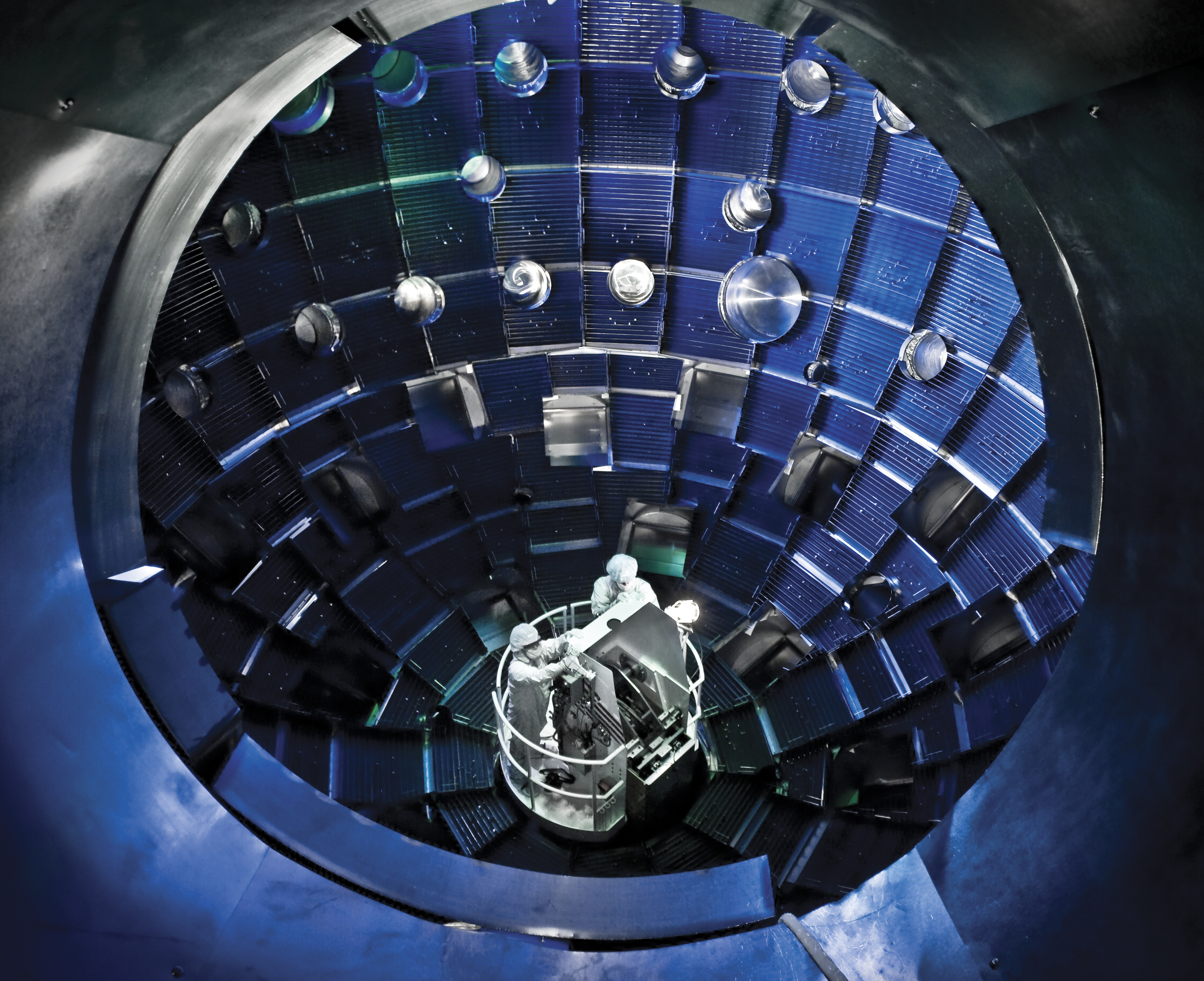National Ignition Facility, abbreviated NIF, is one of the largest and highest-energy laser facilities in the world. The NIF was built to produce a peak energy output of 1.8 million joules of ultraviolet laser light. One joule is equivalent to one watt of electric power released over a second. The laser’s 1.8 million-joule peak output only lasts about 20 nanoseconds (billionths of a second). However, this output is still equivalent to 500 trillion watts of power or roughly 500 times the peak electric power use of the United States. The NIF laser was completed in 2009. It is housed at Lawrence Livermore National Laboratory in Livermore, California.

The laser is designed to ignite two isotopes (forms) of hydrogen in a nuclear fusion reaction. Nuclear fusion is the process in which atomic nuclei (cores) combine to form the nuclei of heavier elements. In this case, nuclei of two isotopes of hydrogen—deuterium and tritium—fuse to form helium nuclei. Nuclear fusion releases tremendous amounts of energy.
The main NIF laser splits into 192 separate beams spread around the surface of a ball-shaped chamber. The beams are focused on a tiny cylinder in the chamber’s center. The cylinder holds a small pellet of supercold hydrogen. When the laser is fired, the beams strike the cylinder. The laser beams striking the cylinder generate X rays, which in turn strike the hydrogen pellet. The resulting heat and pressure cause a powerful implosion (inward explosion) on the surface of the pellet. The implosion further heats and squeezes the pellet, forcing the hydrogen nuclei to fuse.
Scientists use the NIF to study nuclear reactions and other physical processes. They also hope to produce a fusion reaction that gives off more energy than is needed to ignite it. Such a breakthrough could help enable the development of fusion as an energy source.
In 2014, scientists at the lab revealed that they had achieved “fuel gain” in an experiment using the NIF. Although it falls short of ignition, a fuel gain occurs when the energy generated through fusion reactions exceeds the energy deposited into the fusion fuel. The event marked the first time such a reaction has been achieved.
See also Nuclear energy (Experimental fusion devices).
